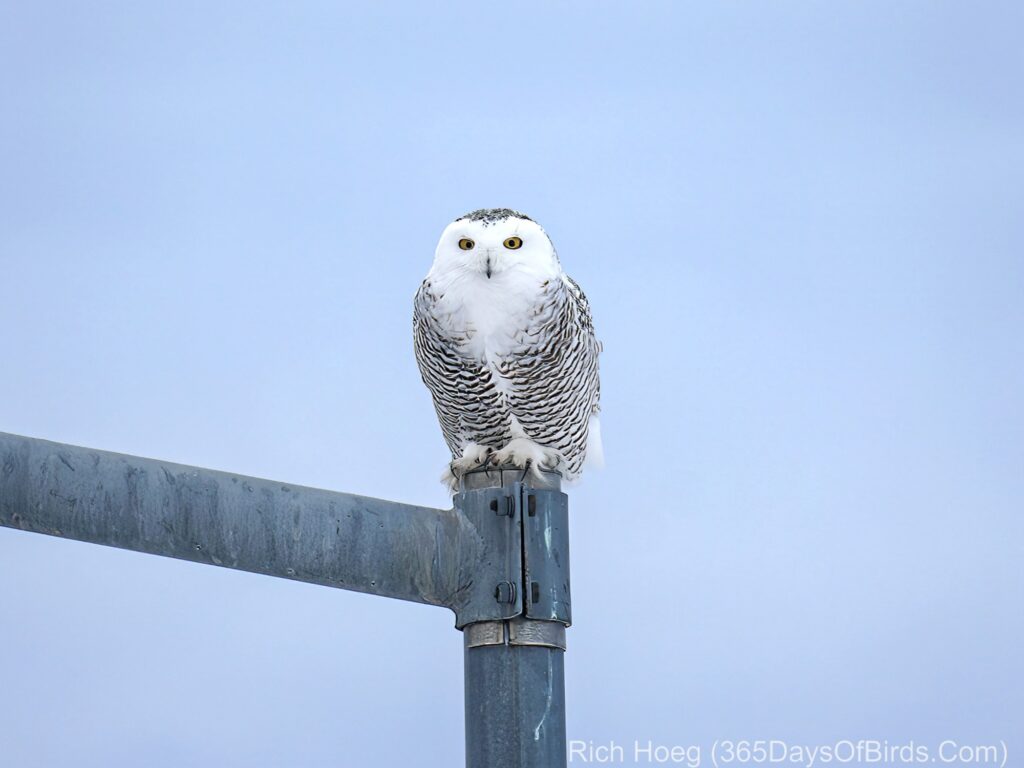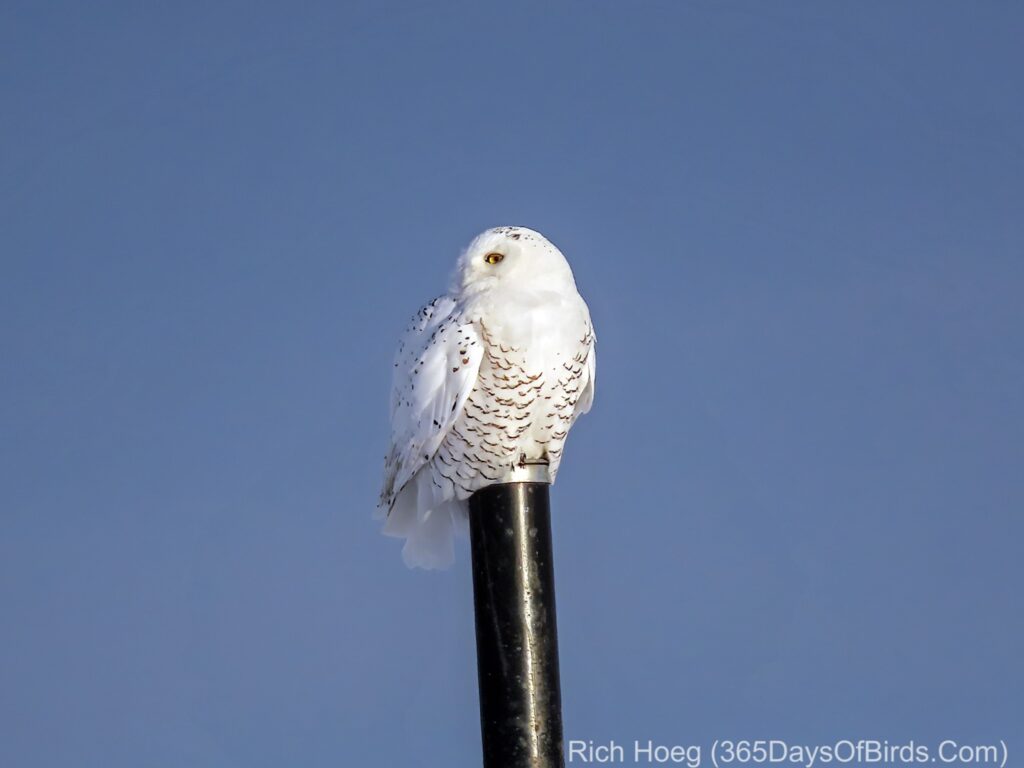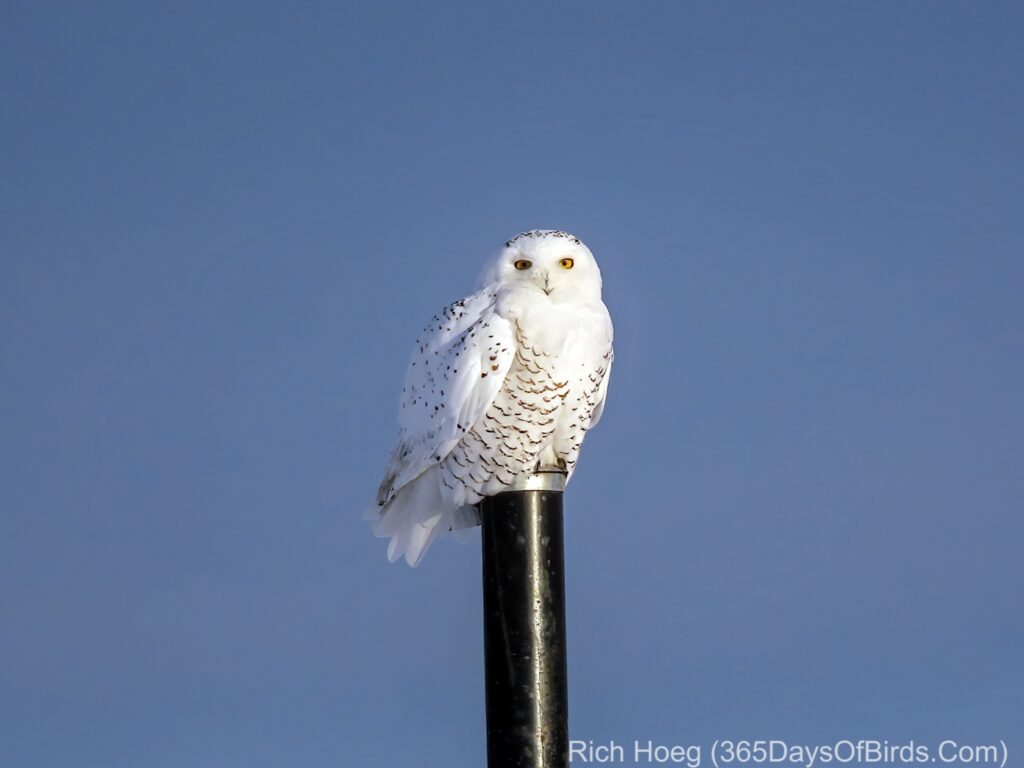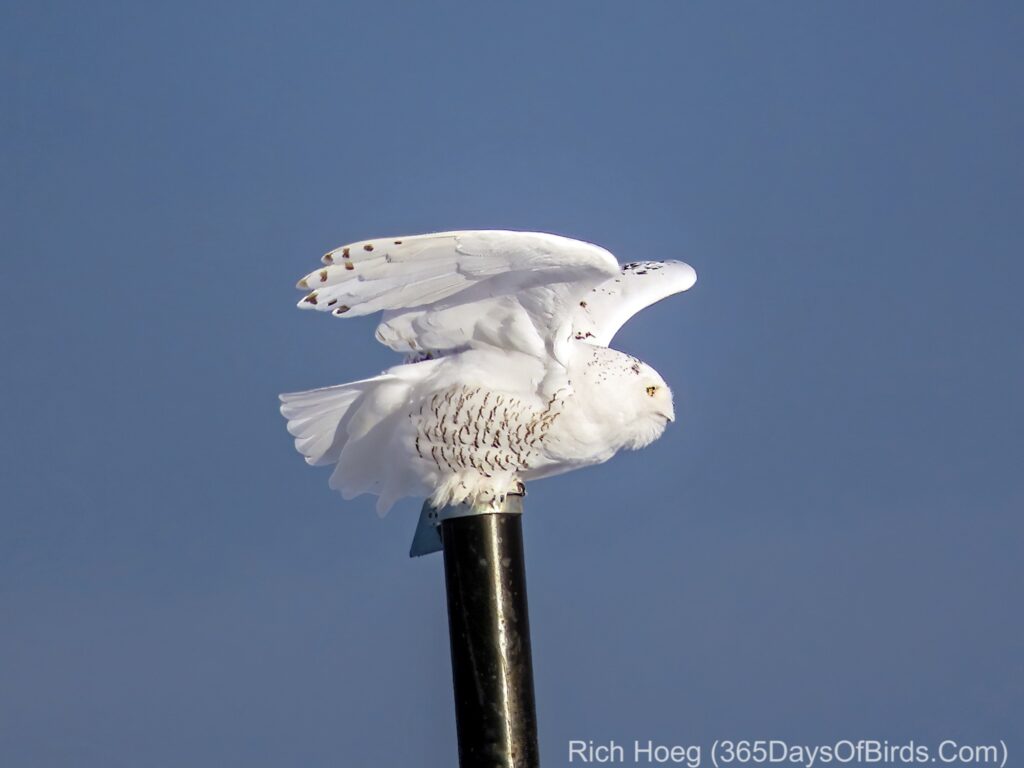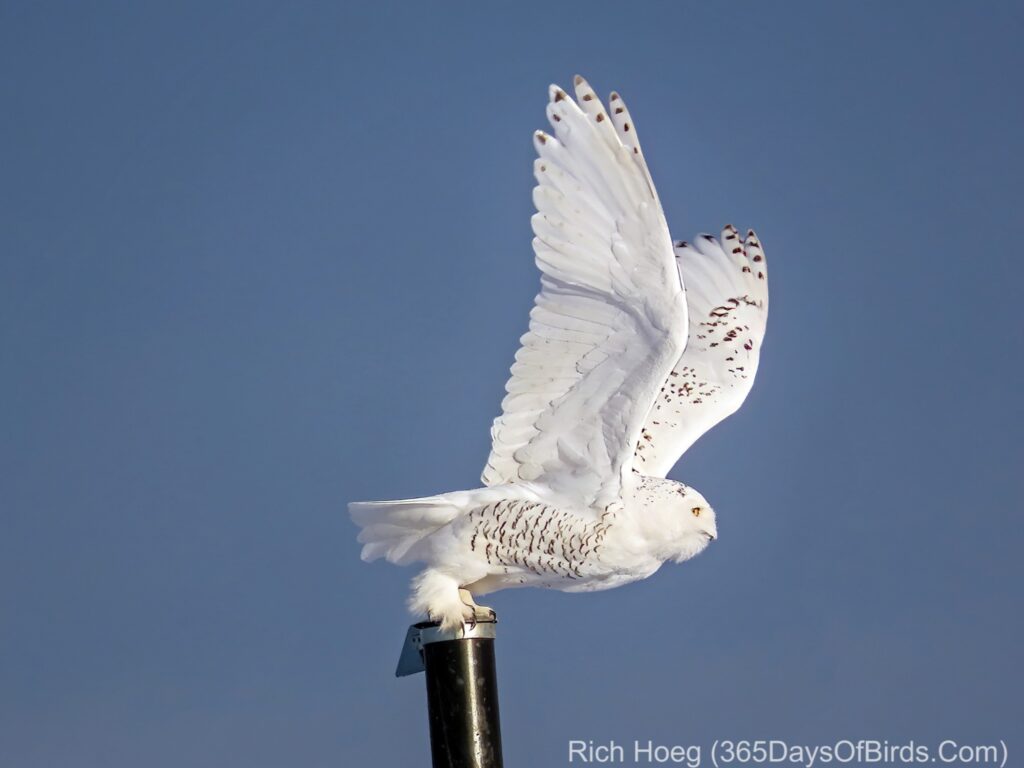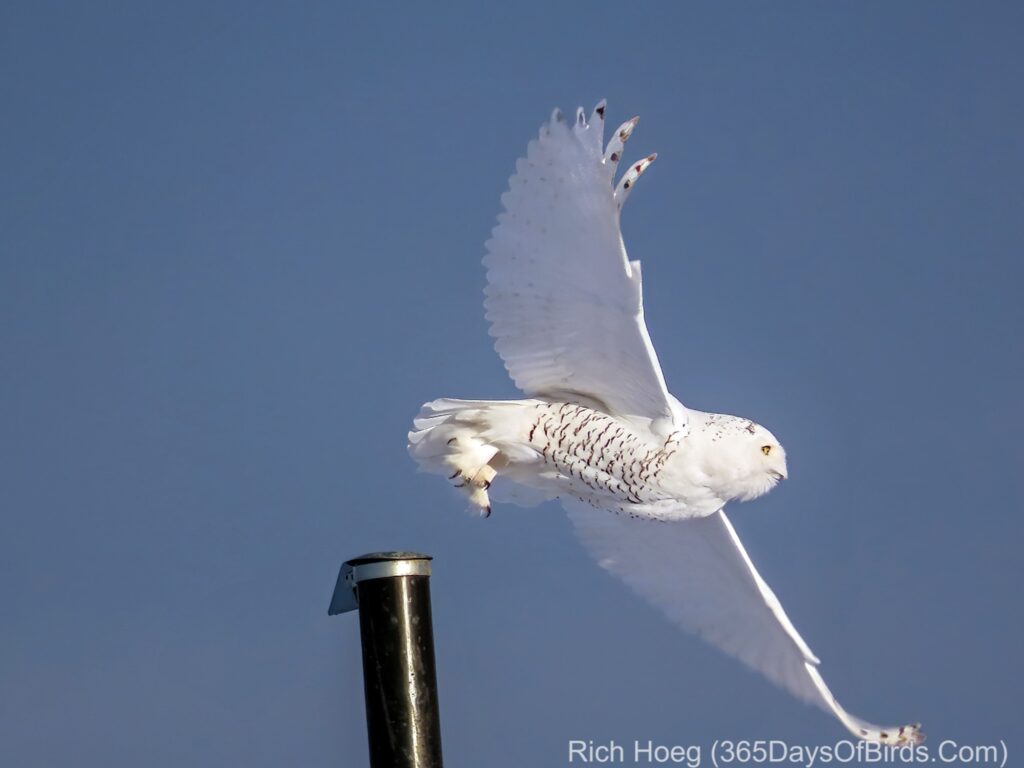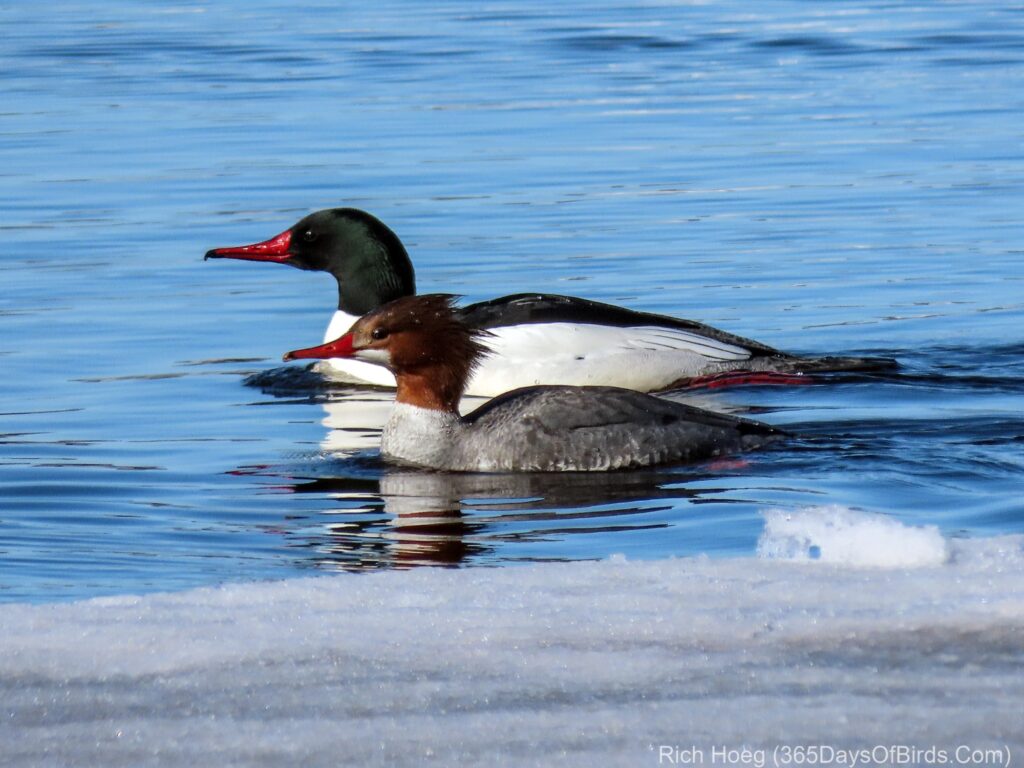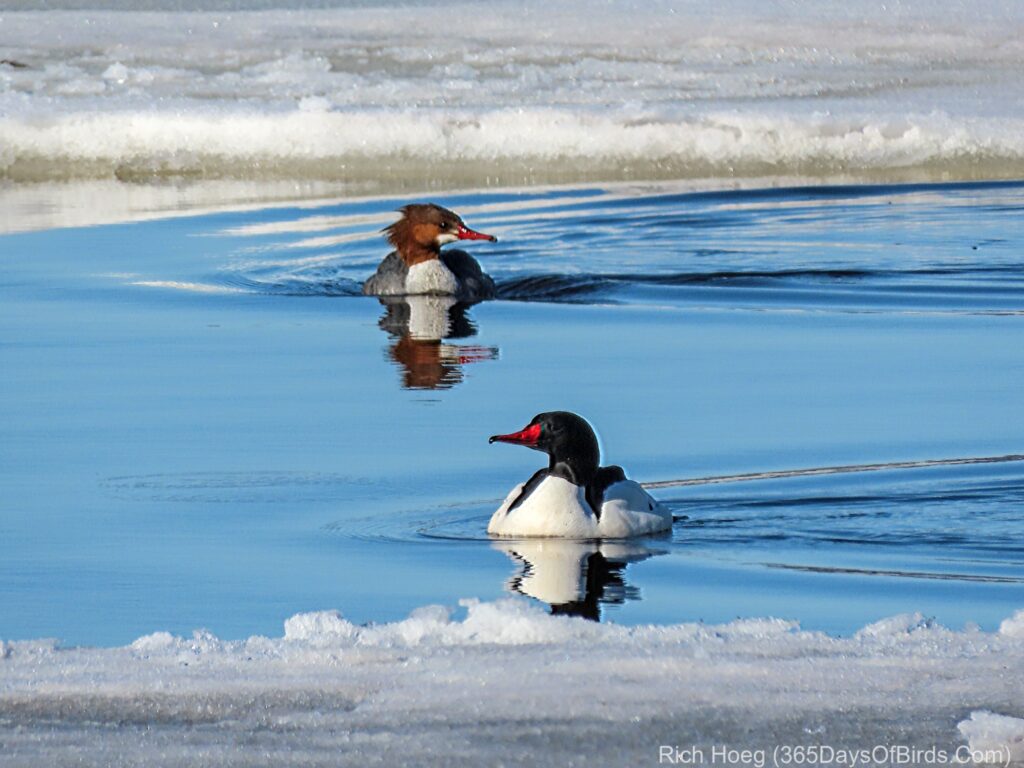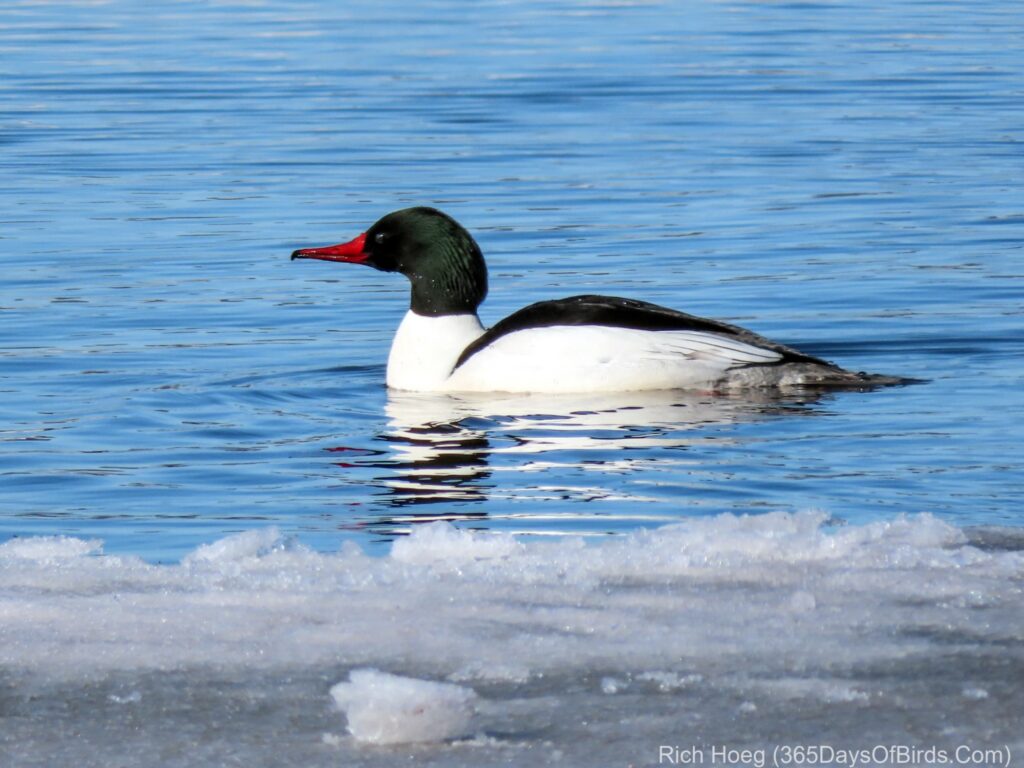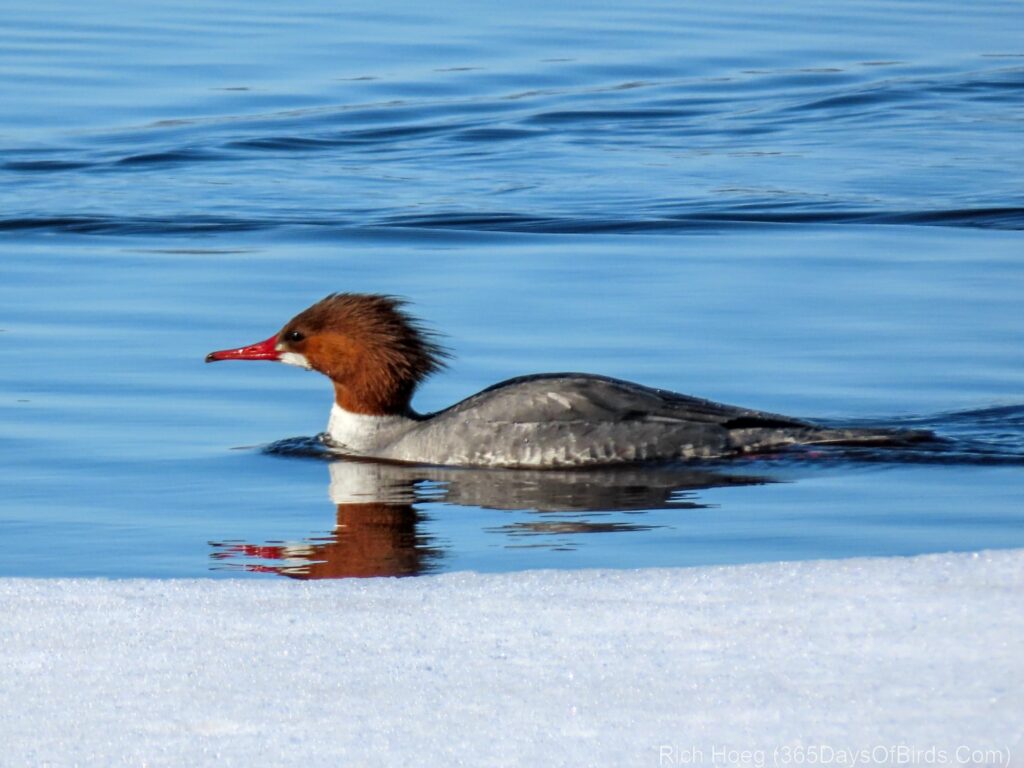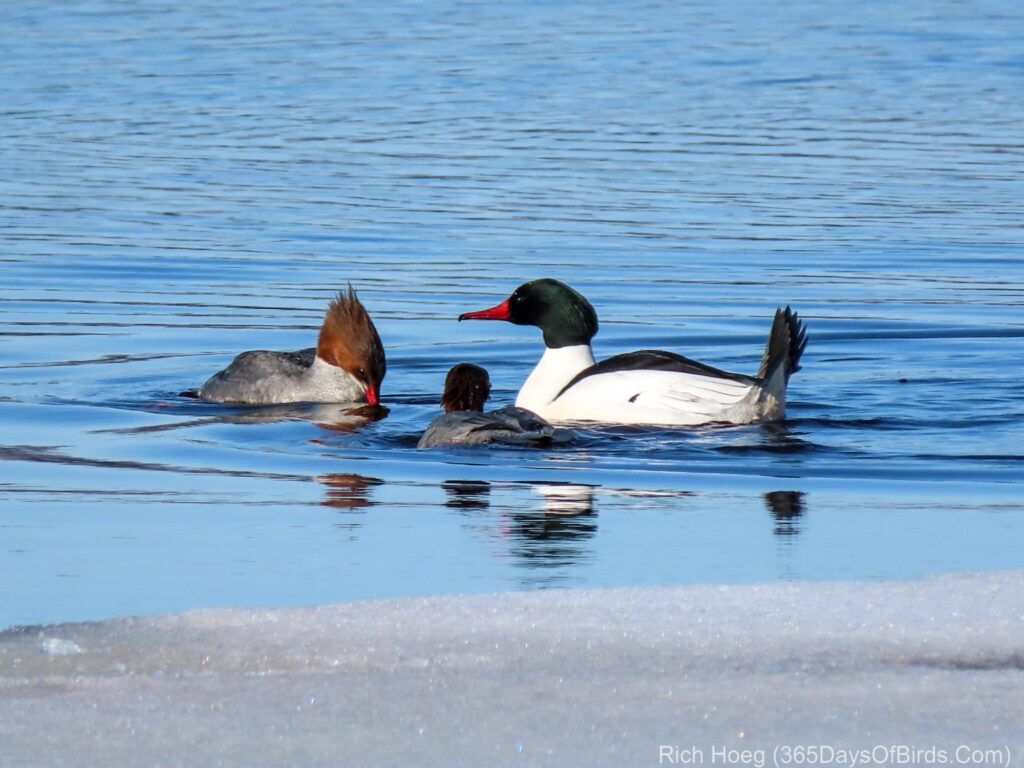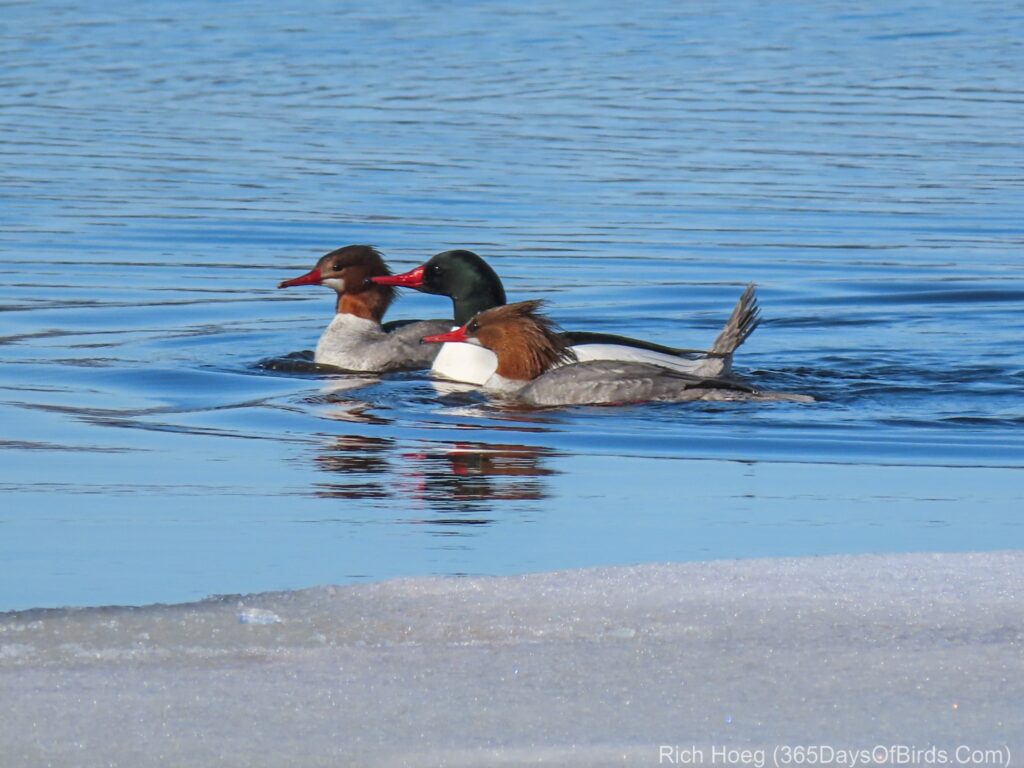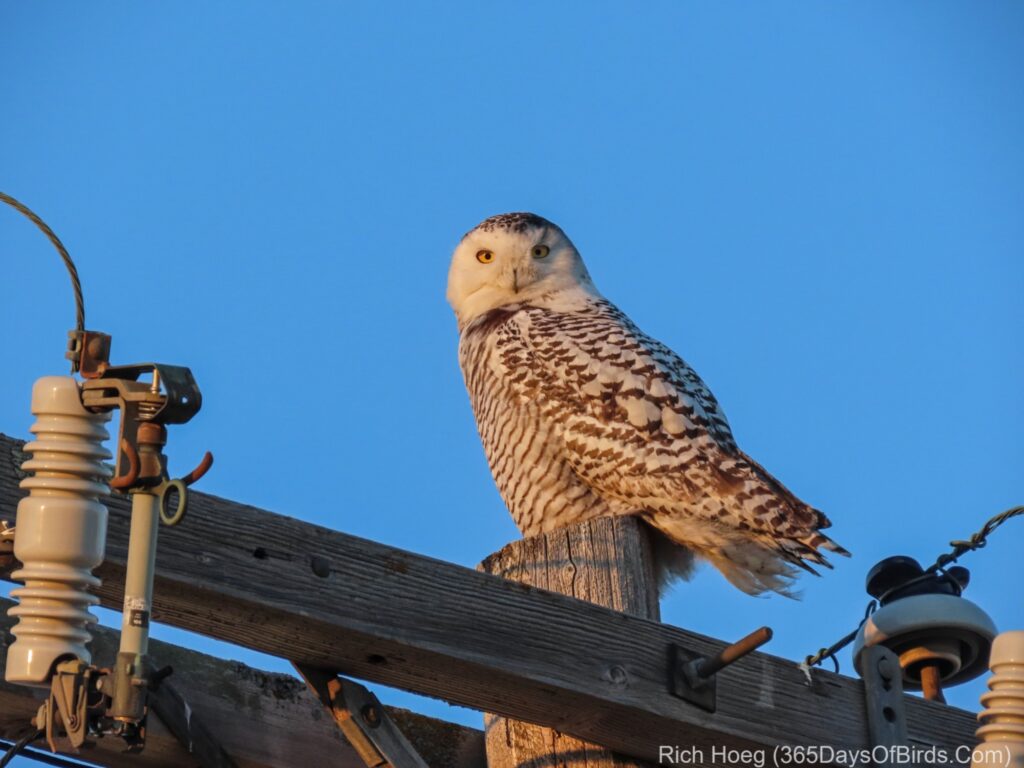I had a great time watching not one, but two Snowy Owls hunt yesterday afternoon. At one point the female took exception to the male hunting near her winter territory, and chased the male out of the area. Like most owls, female Snowy Owls are larger than the males, but their feather coloration is also different. As a male approaches maturity it becomes increasingly “snowy white” and loses most of its black streaking. A male Snowy Owl that might be six years normally is “snowy white”. Learn more about Snowy Owls via the Owl Institute’s web page dedicated to Snowy Owls.
Here are my two Snowys. The first image was taken yesterday afternoon of the female. The second image was taken two days ago of the male. Note how the male (a young male which is likely is not yet of breeding age) is much more white.
Remember, if you like Snowy Owls, I give away PDF full versions of my children’s picture book, Snowy’s Search for Color. Learn more and get a copy. Printed copies will be available again in January.
